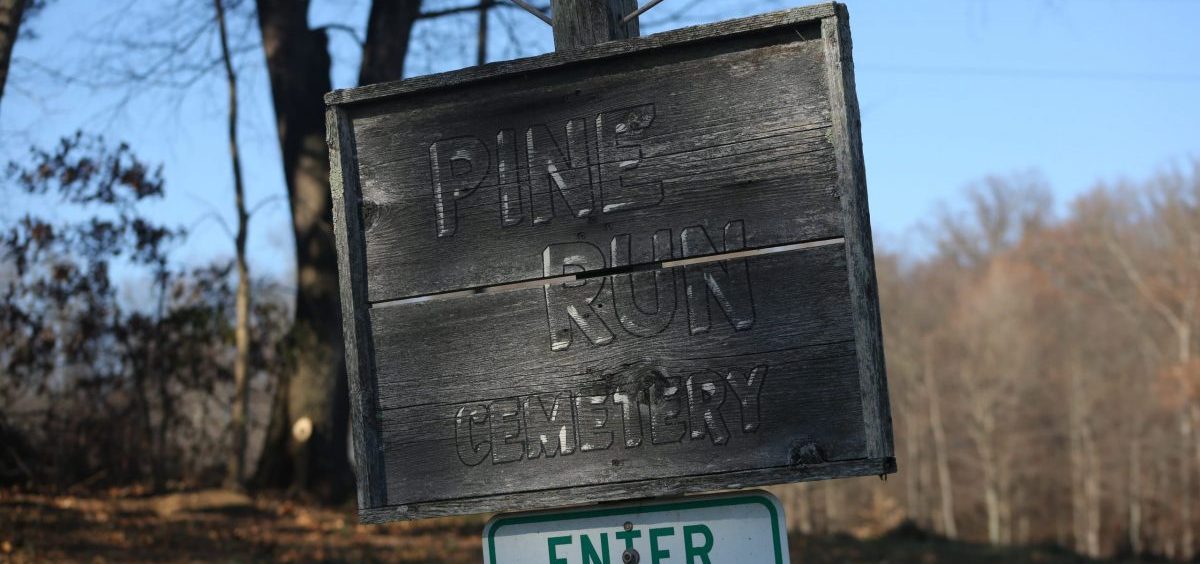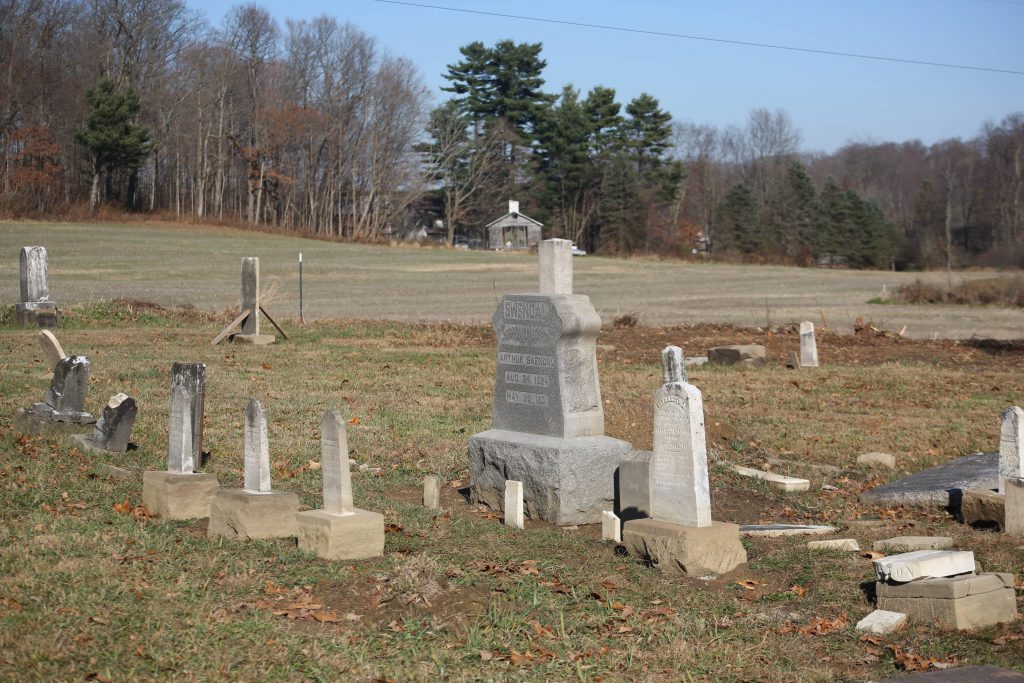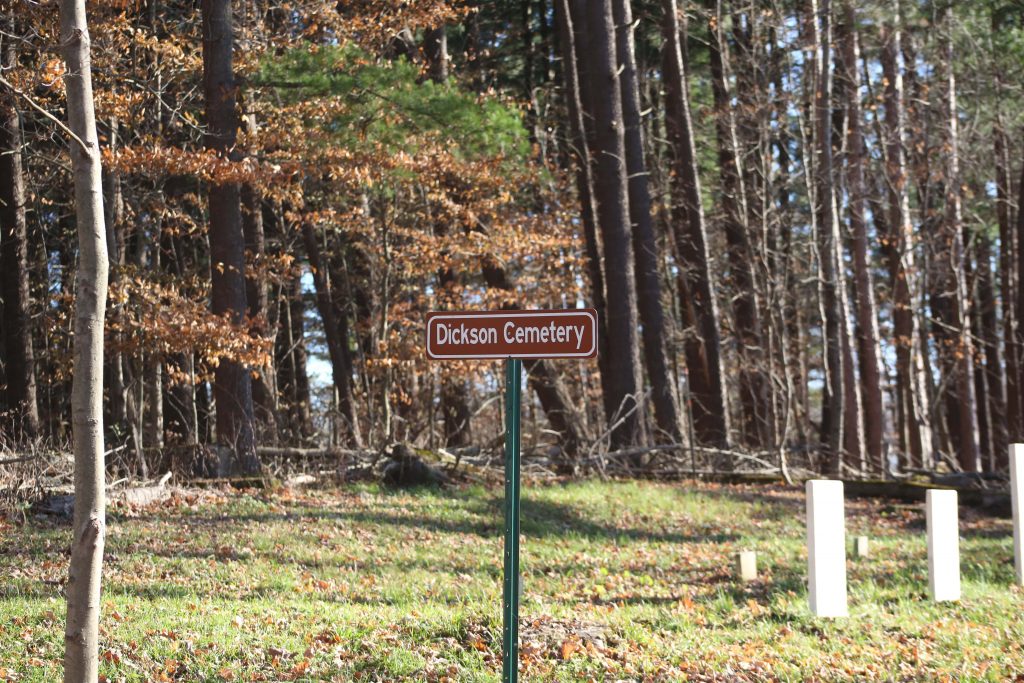
The Forgotten Cemeteries of Richland County
By: Eric Boll
Posted on:
BELLVILE, Ohio- It isn’t unusual to stumble upon a small gravesite when driving through rural Ohio counties. Many of these gravesites are small, having anywhere from 10 to 25 headstones, but they pose a big problem for local governments.
The Law
The Ohio Revised Code is unclear on exactly what townships are required to do in order to maintain these gravesites. Section 517.06 of the ORC requires the township mow the cemetery at least twice a year, but Section 517.11 requires much more.
“The board of township trustees shall provide for the protection and preservation of cemeteries under its jurisdiction.”
Ronny Echelberger, of the Richland County Genealogical Society, said he believes most townships favor the less onerous requirement.
“The mowing seems to be the extent of ‘preservation and protection’ that I have observed,” he said.
The Role of Genealogists

This lack of attention often gives way to further deterioration in the cemeteries.
Sunda Peters, former president of the Ohio Genealogical Society, said it is not uncommon for its members to come across tipped over or damaged headstones.
“(These cemeteries) have been neglected,” Peters said. “The township trustees change every few years so things tend to get lost.”
Pine Run Cemetery in Worthington Township is one such example. Echelberger has been working on restoring this cemetery for months – fighting years of damage.
The cemetery, located in the hilly countryside near Mohican State Park, has 115 recorded burials. This restoration is personal for Echelberger: His great-great-great grandfather is buried here.
Echelberger said Pine Run also demonstrates how historical records for these cemeteries can be difficult to maintain. He said he has found headstones on the opposite side of the cemetery from where records say they should be.
Similarly Echelberger has found headstones listing the names of people buried in the cemetery that aren’t recorded in any historical record.

Echelberger began to restore cemeteries in 2017 starting with a small eight-burial cemetery off of Possum Run Road near Bellville, Ohio.
Dickson Cemetery is nestled between farm fields, creeks and the backwoods of Richland County. The Cemetery was thought lost to history until Echelberger rediscovered it in 2008.
Of those interred, five are from the Cate family, farmers who owned the land where the cemetery was established. The most prominent member of the family is William Cate, the son of John and Catherine Cate, who was a Civil War soldier who died in 1861 at the age of 16.
Upon making this discovery Echelberger got a flag and star placed near his headstone commemorating his service.
Repairing a Headstone
The process of repairing a headstone is a delicate one. Echelberger attended classes on cemetery restoration focusing on maintaining the historical accuracy of headstones.
“Once I’ve located the stone or the pieces of the stone, I’ll begun to put it back together like a puzzle,” he said. “I’ll put them together with a two-part epoxy, that’s specifically designed to glue stone-to-stone.”
“Once I’ve got all the pieces glued together then I can fill in any of the cracks using a historically accurate mortar,” he said. “If it’s a marble stone I’ll use chalk dust to color it. If it’s a redder sandstone then I’ve got iron oxide pigments to try and get the mortar to match the color of the stone.”
Why These Cemeteries Matter
Similar to active cemeteries or church graveyards these rural burial sites tell the tales of immigrants, American soldiers and others. However, those burdened with caring for these cemeteries often struggle to get funding from those legally charged with taking care of them. The task often falls on the community.
“There is no great funding source (for cemetery repair),” Peters said. “Usually it comes from donations within the community, mainly people who have their ancestors buried there.”
Just a couple feet from his great-great-great grandfather’s final resting place Echelberger collected his thoughts before explaining his commitment to caring for these cemeteries.
“I think it’s important to know where you came from,” he said. “You can garner a lot of information from a headstone, not only name, date of death and date of birth. If you read epitaphs there are some beautiful epitaphs. I’ve become convinced that headstones are art. You can learn a lot about how people felt and how they felt about the deaths of individuals just by reading epitaphs.”

